September 20, 2002 - February 28, 2003
After nearly thirty years of serving as a home for rare books, documents, research materials, and artifacts, Special Collections, the University Archives, and the University Museum were ready to share some of their more “interesting” holdings. Oddly Enough was a mixed-media exhibit of some 80 photographs, posters, manuscripts, and objects designed to amuse, puzzle, and pique the curiosity of visitors. Some items in the exhibit were homegrown, representing the history and development of the both the state and the University of New Hampshire. Others represented the outer reaches of the arts, photography or publishing. Some items were just plain strange, and even we haven’t been able to figure them out! And while we remain, first and foremost, a research facility, we believe that once you’ve seen this exhibit, you probably won’t view the department quite the same way again. This exhibit was a collaborative effort among Special Collections, the University Archives, and the University Museum.
What is it?
- A moose call.
- A football noseguard.
- A Native American soapstone carving.
- A cup once worn by Carlton Fisk, Class of 1969.
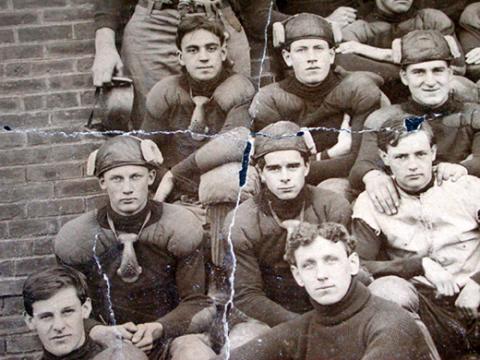
This is a football nose guard as seen here in this photograph of the 1903-04 football team.
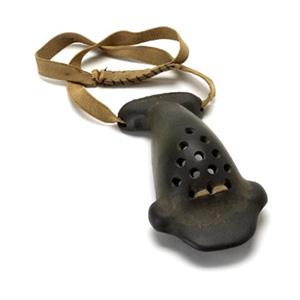
What is it?
- The library carpet, circa 1970.
- An entry in the annual BFA senior exhibit.
- A Tibetan prayer rug.
- A Jasper Johns pop art design

This is the carpet of Dimond Library, circa 1970.
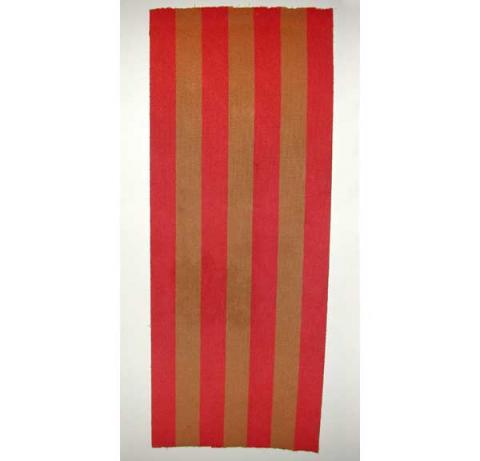
What is it?
- A snuff box.
- A can of sardines.
- A condom container.
- A box of mints.
This is a condom container found in President Lewis's papers, presumably confiscated from a student.

What are they?
- Bowling pins.
- Native American weapons.
- Percussion instruments.
- Exercise clubs.
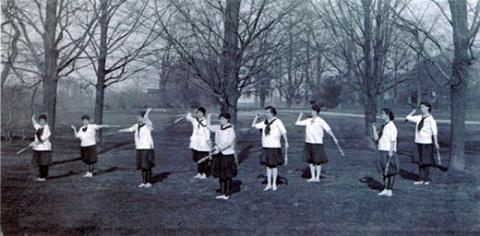
These are exercise clubs, ca. 1920, used in women's fitness classes at New Hampshire College.
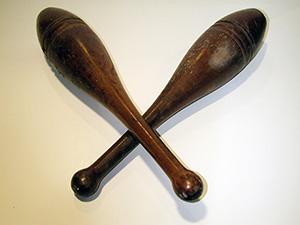
What do these objects have in common?
- They were both manufactured in Durham.
- They are both dancing shoes.
- They are both used as foot protection.
- They were both discovered at the Lee Town Dump.

They were both used as foot protection. Pattens were protective shoe coverings designed to be worn with high heels. Bog shoes were leather shoes worn by horses working in bog and marsh-like terrain. The museum's set of four were possibly used with horse-drawn mowing equipment.
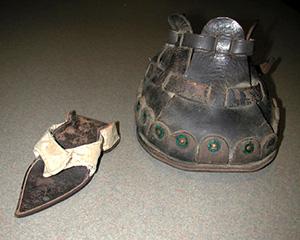
What is it?
- A casino chip.
- A game piece.
- A WWII meat ration token.
- A horse pill.

This is a WWII meat ration token. The Office of Price Administration was established in 1941 to administer price controls. Eight thousand rationing boards were created with 200,000 volunteers to assist the 60,000 employees of the agency. Food rationing included restrictions on sugar and meat; clothing rationing restricted silk and nylon. Gasoline rationing began in May 1942 on the East coast, limiting use to five gallons per week.

What is it?
- A divining rod.
- A snare trap.
- A lasso.
- A train message stick.
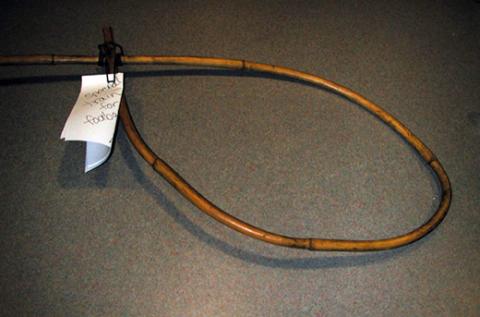
This is a train message stick, ca. 1920, used as a message conveyor when trains passed through Durham without a planned stop. The message was attached to the stick with a spring loaded hinge and handed to the conductor who would take the message and throw back the stick.
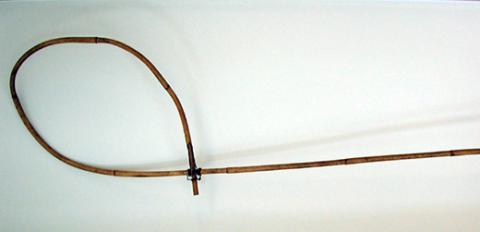
What is it?
- A library sorting system.
- A sheep grooming kit.
- Confiscated drug paraphernalia.
- A 1960s fondue set.
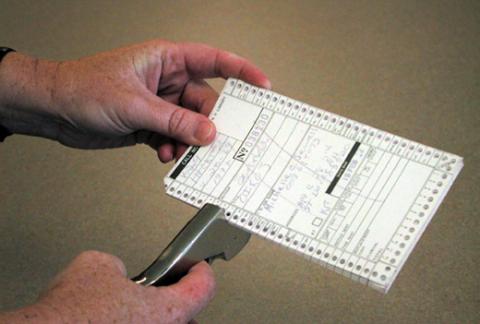
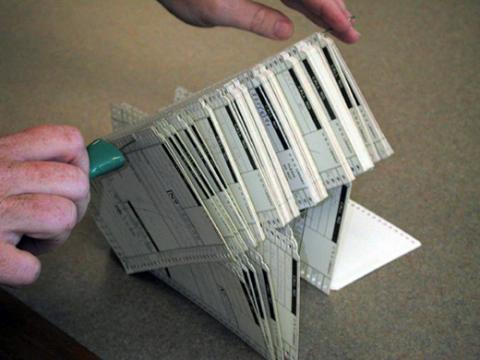
This is a library sorting system. Until the library went electronic in the late 1980s, this was the method used for tracking books signed out.
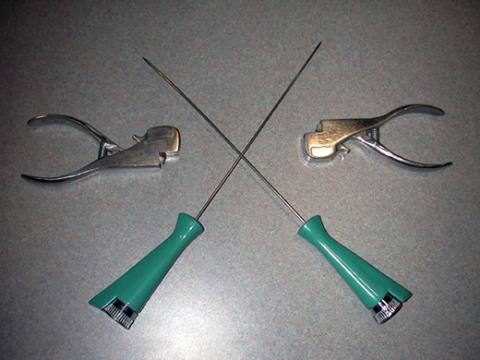
What is unusual about this book?
- It is decorated with NH gold leaf.
- It features a fore-edge painting.
- It was discovered at the Lee Town Dump.
- It is signed by the author.
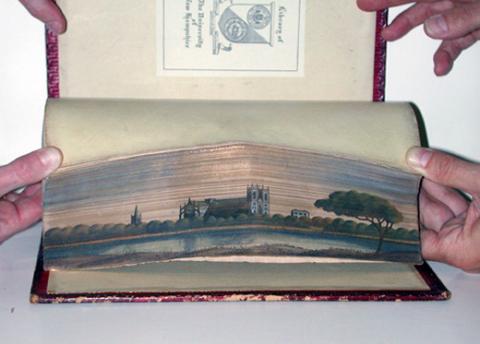
This book features a fore-edge painting. The technique of fore-edge painting was developed in the middle of the 17th century, but was little practiced until the end of the 18th century. The method was to fan the fore-edge of the text block (the outer edge) and clamp it. Then a water color painting would be executed on the fanned leaves. When dry, the fore-edge would most commonly be gilt, less commonly marbled. With this concealment, the existence of the painting would be unknown unless the fore-edge was fanned.
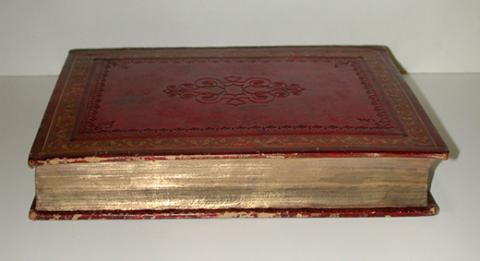
What is it?
- A clothes wringer.
- An early calculator.
- A pastry cutter.
- A casino game.
This is an early calculator. This is the Edwin Thatcher Calculator, 1881. Calculation using the Thatcher Calculator was performed by pulling out the center cylinder and adjusting the number alignment. The calculator, also known as a slide rule, included a magnifying glass, though this example no longer has one.

